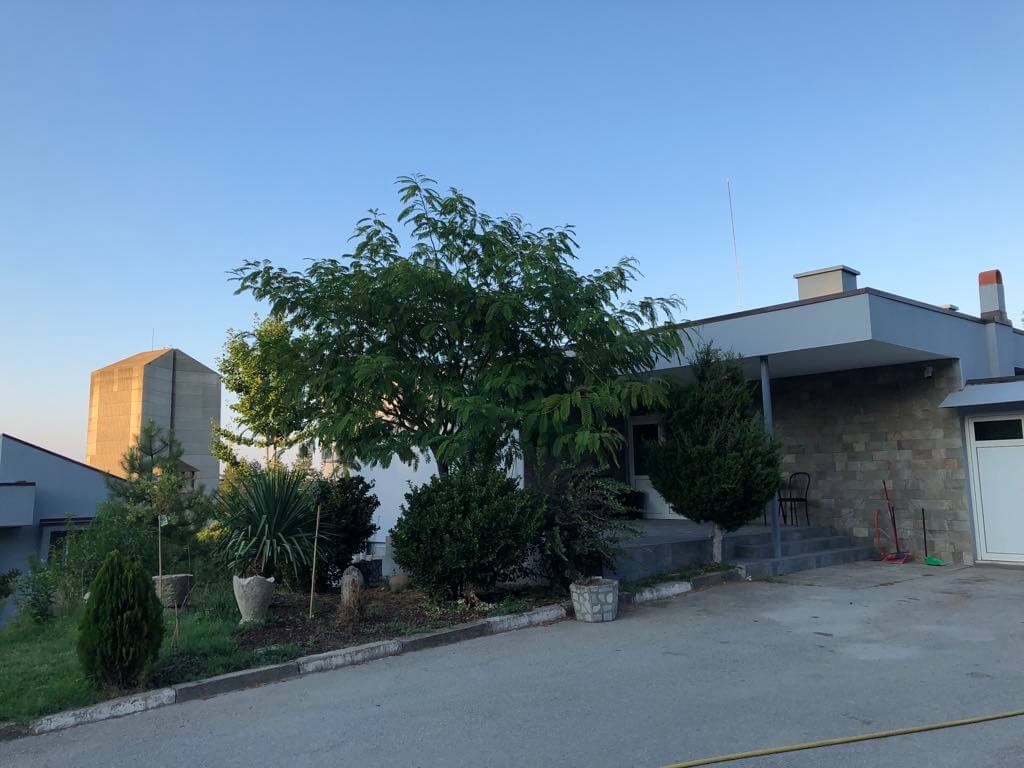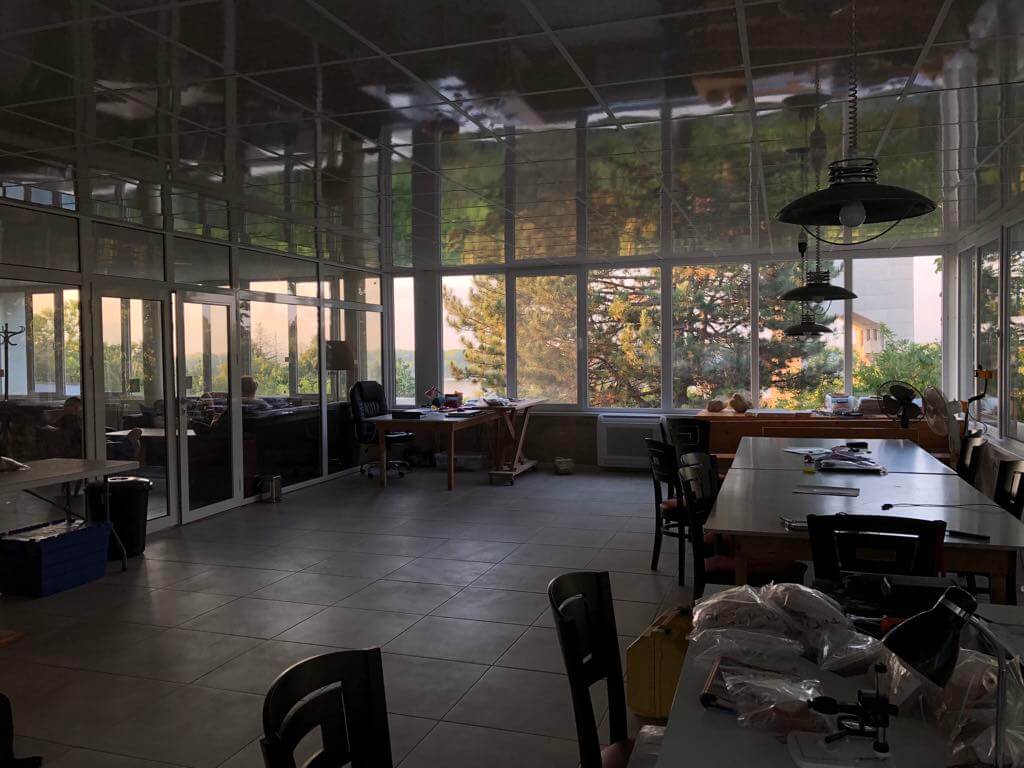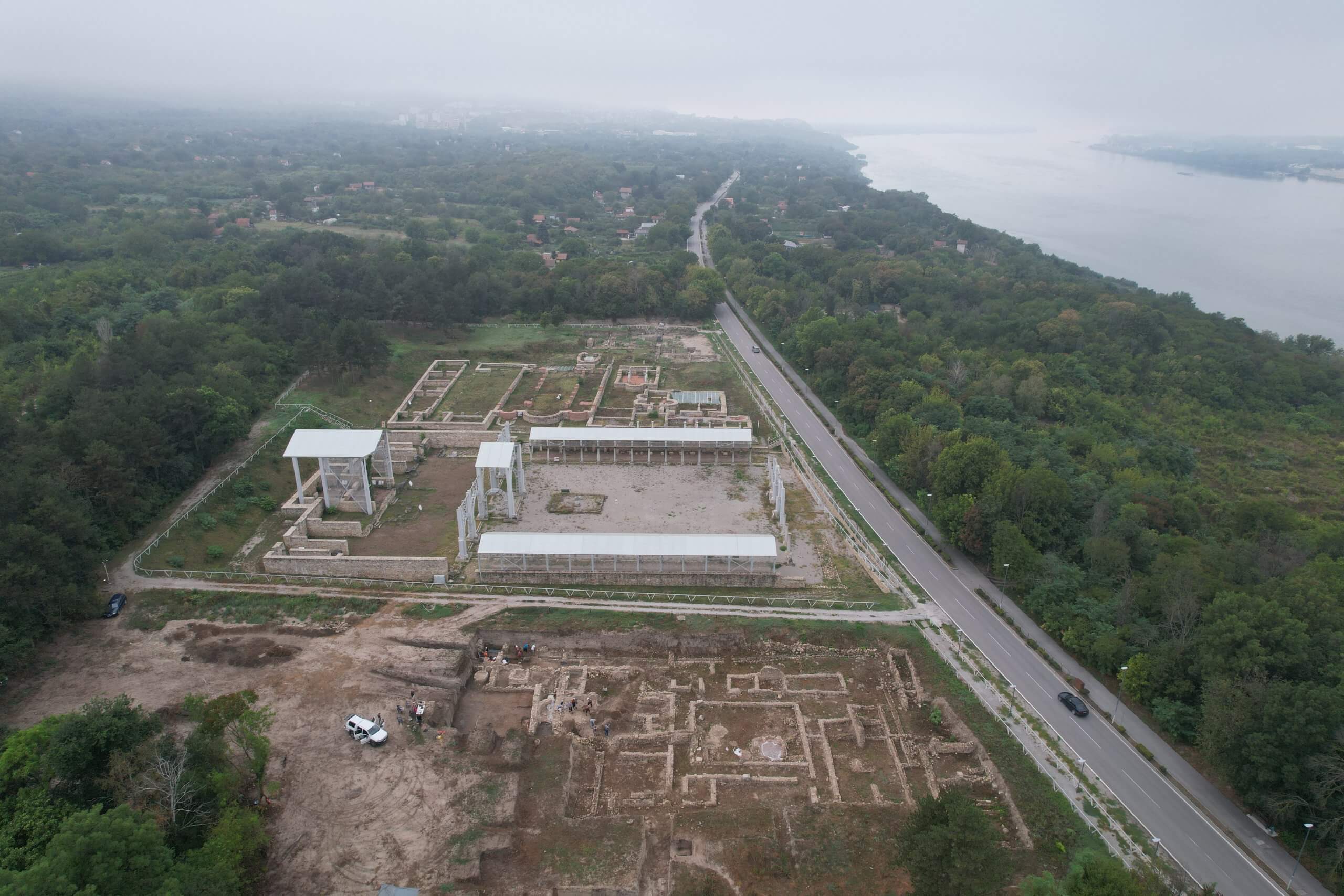The extensive renovations at the base delayed the tidying up of the area surrounding the base for a long time, in accordance with the saying that “Rome wasn’t built in a day.” This is especially true when financial resources, which are never abundant, need to be managed carefully. These tasks began this year, but drought interrupted the work. They will be resumed in the autumn of this year, as well as in the spring of the following year.
Just like owning a home, new tasks constantly arise. Therefore, plans are already being made for 2025, taking into account our financial capabilities. Let’s hope everything goes well.

The base also hosts an intense “scientific life,” not only during the excavation period. We have already hosted researchers from Adam Mickiewicz University. As mentioned, work on the artefacts has been initiated by Inga Głuszek from Nicolaus Copernicus University in Toruń. In September, after the excavations have concluded, Iwona Zych will examine the ancient lamps from section XII, and later, Renata Ciołek and her team will focus on the coins. During this time, Janusz Recław will also be in Novae – this time in the role of chief gardener, renovation manager, and archaeological survey specialist.
In the autumn, right through to December, more scientists will find a cosy shelter and suitable working conditions at our base.

The Centre’s excavations have attracted the interest of international media. In Risan, a team from National Geographic was present, while in Novae, a BBC Science crew was working. Of course, the “stars” are our famous Roman “refrigerators,” which, as it turns out, have been reported on by the media in Australia and Dubai. Indeed, it’s impossible to predict what will capture the world’s interest. The important thing is that Polish archaeology – not just our achievements but also those of other departments of the University of Warsaw conducting research abroad – is being talked about and reported on.
Our updates from Novae are currently more focused on describing the organisational work and the team’s atmosphere. This is understandable since only now, after more than two weeks of excavation, are we reaching the most interesting legionary layers. Unfortunately, they lie nearly 4 metres deep, so reaching them, given the tangle of later walls, is very difficult.
Of course, during excavations, the results are what matter most! We can already reveal that, as usual, Novae doesn’t disappoint. Just when it seems that a problem has been solved, “Novae does its own thing,” and even the bravest team – which the Centre’s team undoubtedly is – can do nothing about it: nec Hercules contra plures. As is often the case in archaeology, just beyond the trench wall or in the exit ramps, new mysteries lie hidden.
This is the case this time as well. More about the mysterious findings in the next instalment of these “memoirs.”
If you’re curious to follow the addition of more pieces to this magnificent puzzle known as the antiquity of South-Eastern Europe, visit our website, also on Instagram: https://www.instagram.com/antiquity_research_centre?igsh=aHhrb2JrcXQyZDBq





